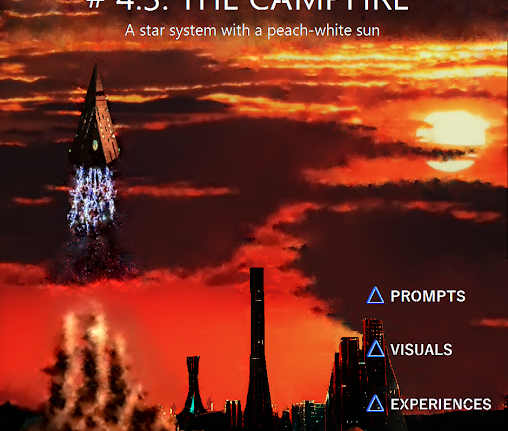
Dominating the short nights of late spring is Arcturus, the brightest star in the northern hemisphere sky and the sentinel of spring. It is the bright leader of the constellation Boötes, the Shepherd or Guardian Bear, an area of the night sky that is devoid of bright deep-sky objects, including Messier's designated targets. Don't you think it's quite fitting then that the otherwise uninspiring Boötes has been granted the distinct honor of hosting Arcturus, as well as several magnificent double stars, including the beautifully formed and named Pulcherrima (Izar, epsilon Boötis)?
 Arrival at Arcturus
Arrival at Arcturus
Arcturus is a magnificent star to the naked eye, shining at a magnitude of –0.04 (one of four stars that can boast a negative first magnitude) and with an obvious and attractive reddish-orange hue that is easy to see even from places with light pollution. Arcturus is eclipsed in UK skies only by twinkling Sirius, magnitude –1.4.
Around mid-May, Arcturus (alpha Boötis) culminates in about the middle of the southern sky at 11 pm BST. Boötes is tall, extending from seven to 55 degrees declination and covering about 20 degrees east to west at its widest point. Its brightest stars outline a huge comet-like shape stretching 23 x 10 degrees, with Arcturus anchoring the “comet.”
If you're still not sure you're looking in the right place, you can follow the well-traveled route to Arcturus from the famous and distinctive 'Plow' or 'Ursa Major' asterism of the Big Dipper, which now sits high above. Simply follow the curve of the plow handle toward the horizon, clearly called the “Arc to Arcturus” in some quarters, until you land on the bright reddish-orange star.
Of course, amateur astronomers see Arcturus simply as a point source, although they may try viewing it through binoculars or a small telescope to intensify the experience.
Arcturus is a classic K-class red giant star, with a precisely defined surface temperature of 4,290 degrees Celsius. It is 36.7 light-years away, close enough for astronomers to directly measure an apparent diameter of 0.0210 arcseconds, which, at its distance, is physically equivalent to a diameter 26 times the size of the Sun. although the mass of Arcturus is similar.

Stop for Pulcherrima
Boötes is home to half a dozen excellent double stars, but there's no argument as to which is the best; is the wonderful name, after FGW Struve, Pulcherrima, which in Latin means “fairest” or “fairest,” and more soberly known as Izar or epsilon Boötis. Despite the epsilon designation, it is actually the second brightest star in Boötes, with a magnitude of +2.6. Pulcherrima forms part of the 'comet' asterism as a magnitude +2.3 star about 10.5° northeast of Arcturus.
Turn even a small telescope and with high magnification and good vision you will get a splendid view of one of the double stars with best color contrast in the late spring sky. An orange giant of magnitude +2.7, class K0, is separated from a main sequence white dwarf of magnitude +5.1, class A2, by an easy-to-split 2.8”. The secondary has a bluish tint through the eyepiece.

Xi Boötis' colors are a joy
Xi Boötis is the Herdsman's second standout double star; Returning to Arcturus, move your telescope 8° east to land on this magnitude +4.5 star. The small telescopes show a very nice color contrast, with the primary, which exhibits a degree of variability between magnitudes +4.52 and +4.67, showing a beautiful yellow-orange tint, while the secondary of magnitude +7 shines orange-red in color.
The pair orbits their common center of gravity once every 151 years in a highly elliptical orbit. From Earth, its separation ranges between 2.1” and 7.3”; Having reached their widest separation in 1978, the stars are now slowly closing and will reach a separation of 2.1” in 2066.
Alkalurops: another great nickname
In the northernmost regions of Boötes, near its boundary with the Corona Borealis, a magnitude of +4.3 mu 1 Bootis is found. It is worth visiting solely for its wonderful name of Alkalurops, which means “club” in Greek. However, there's more to it than just a big name: he's a big triple star.
At first glance, at low powers, the system appears to be simply a double, due to the enormous 1.8' gap between the magnitude +4.6 yellow primary (Alkalurops) and seventh magnitude secondary mu 2 Boötis. However, increase the power of the latter through at least a 100mm (four inch) telescope and it will split into a yellow-orange pair 2.2” apart.















Leave feedback about this